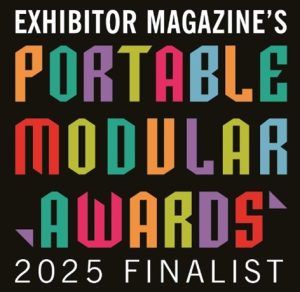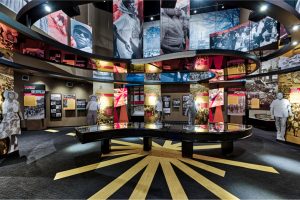So, you want to step up your company’s face-to-face marketing presence. You need a plan: which trade shows should you attend? What’s the ideal size for your booth space? Should you rent or invest in a custom build? Where can you find a reliable partner to design, fabricate, ship and install said booth?
These are all important questions you and your company should be asking, but I’d challenge you to ask one more: What role does creativity play in your plan?
We believe that creativity is a wide reaching and all-encompassing idea. More so, it’s highly successful when we are all on the same page about what it means, how it is interpreted, and the ultimate role it plays in a successful deliverable. This is best achieved through a clear and concise creative brief.
In the trade show and exhibit industry, creative briefs are not the norm like they are in other disciplines like advertising and direct marketing. A creative brief is simply a communication tool that outlines the requirements, expectations, goals, and resources for a project. This living document is incredibly useful for any size project and it gets both parties on the same page to ensure a problem is solved with a satisfactory result.
Here are three compelling reasons your face-to-face marketing plan needs a creative brief:
Reason 1: Complete Understanding of the Project Scope
In life, some of our most significant issues arise from poor communication; business is no different. The creative brief works to eliminate that possibility by laying all information out in a simple, easy to understand format. Think of it as a comprehensive creative overview, highlighting the project name, objectives, scope, timeline and of course, budget. This ensures both parties have all the available information and resources to deliver a mutually satisfactory end product.
Reason 2: Identifying any Problems or Challenges
There is a solution for every problem and a creative brief serves as a documentation of the identified issue agreed upon by both parties, submitted and approved by the client before a project kicks off. It could be as simple as, “The client needs a better way to identify quality leads in their booth during a show.” Identifying the problem means asking meaningful questions in order to discover the root of the issue so that we can work toward a meaningful end design.
Reason 3: Offering a “True North” for the Entire Team
Written by the client, a creative brief is a veritable treasure map for a creative team, but it does so much more than that. It’s a useful tool that your entire team can refer back to throughout the course of a project. It’s easy to get lost as a project progresses and as more opinions are added to the mix, particularly on a longer or more complex project. This is where the creative brief really works its magic, serving as a “true north.” The brief is useful for the entire team and keeps everyone on track, well beyond members of the creative team.
Ready to get started? We’ve created a simple downloadable Creative Brief Template that you can view and download HERE.











